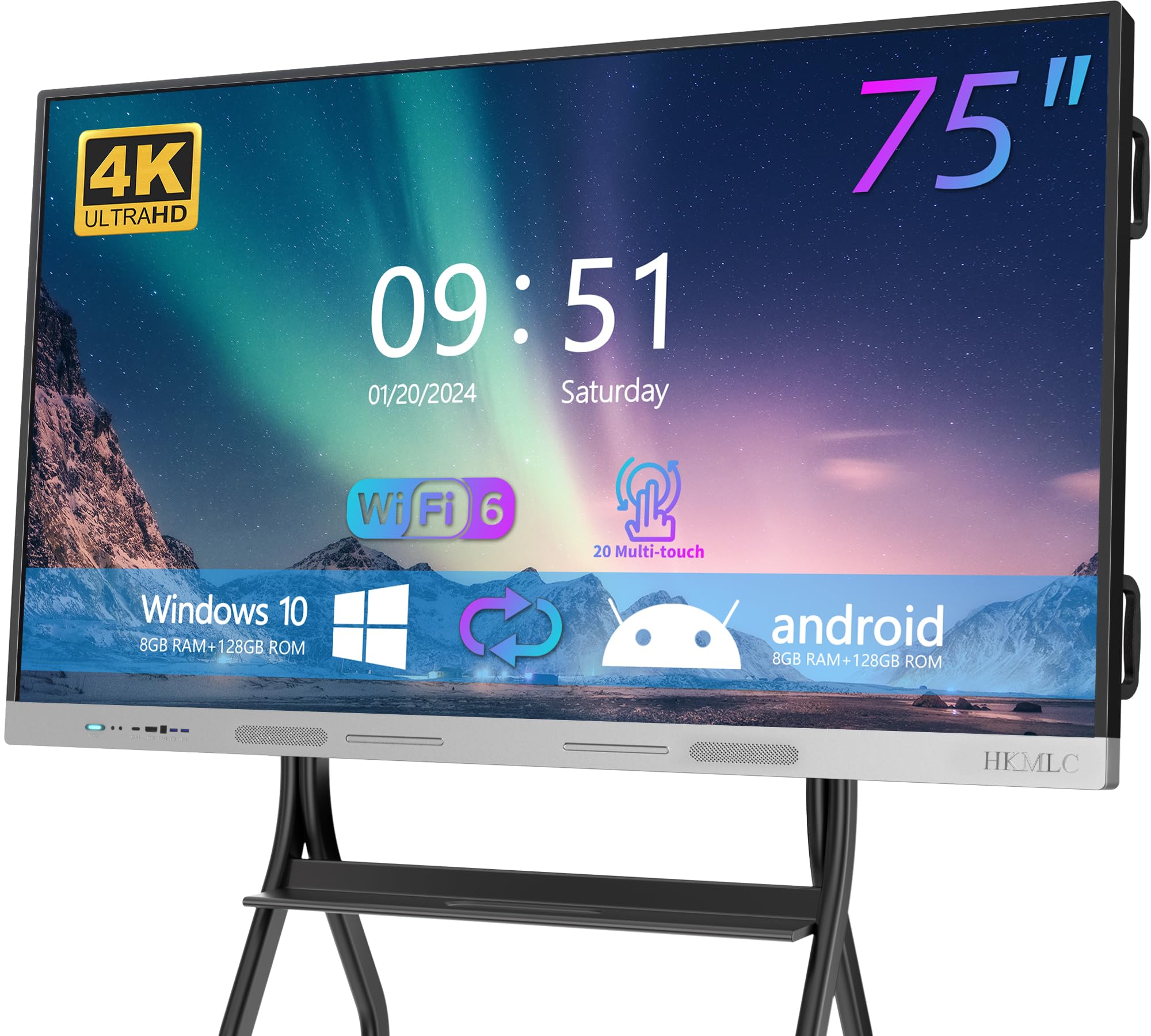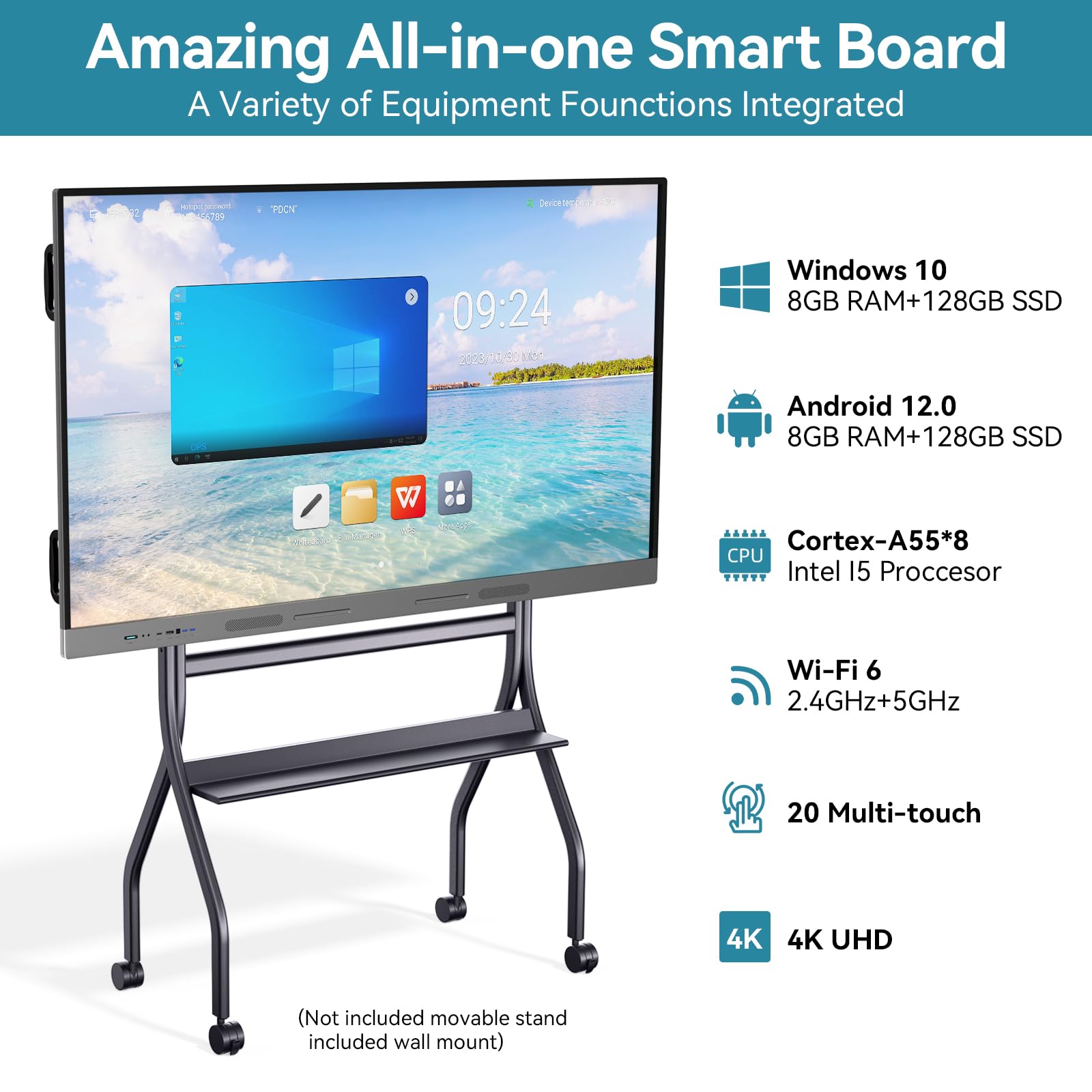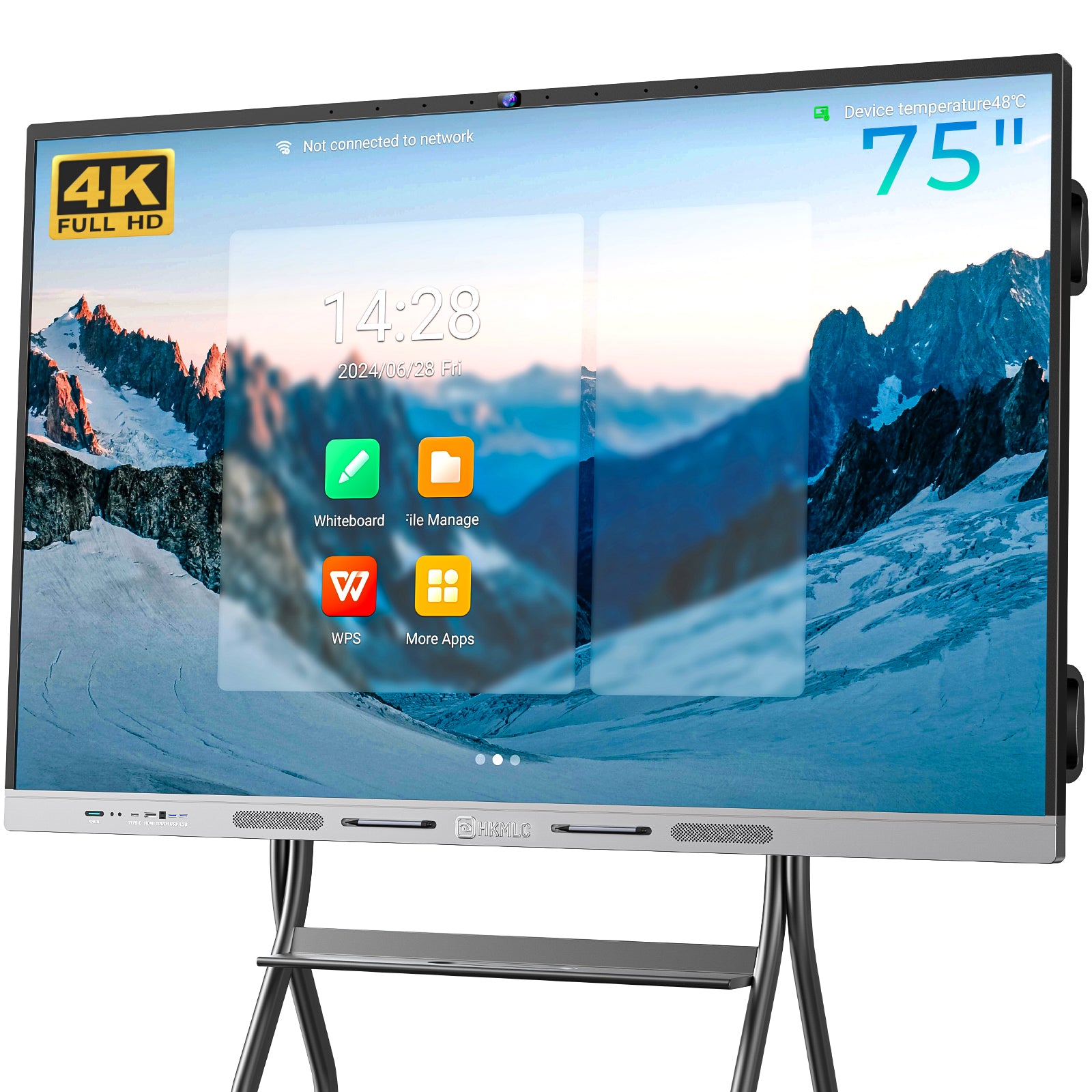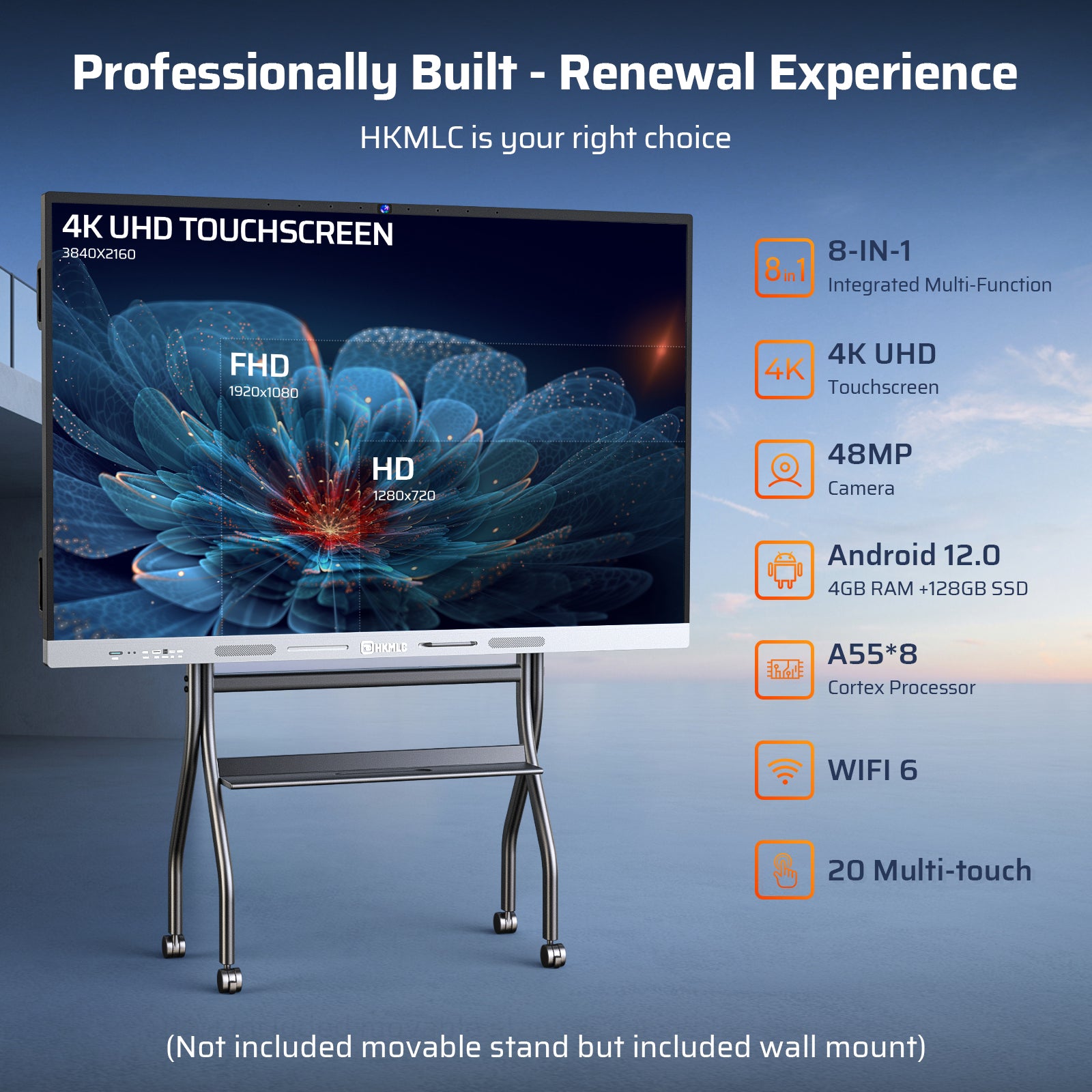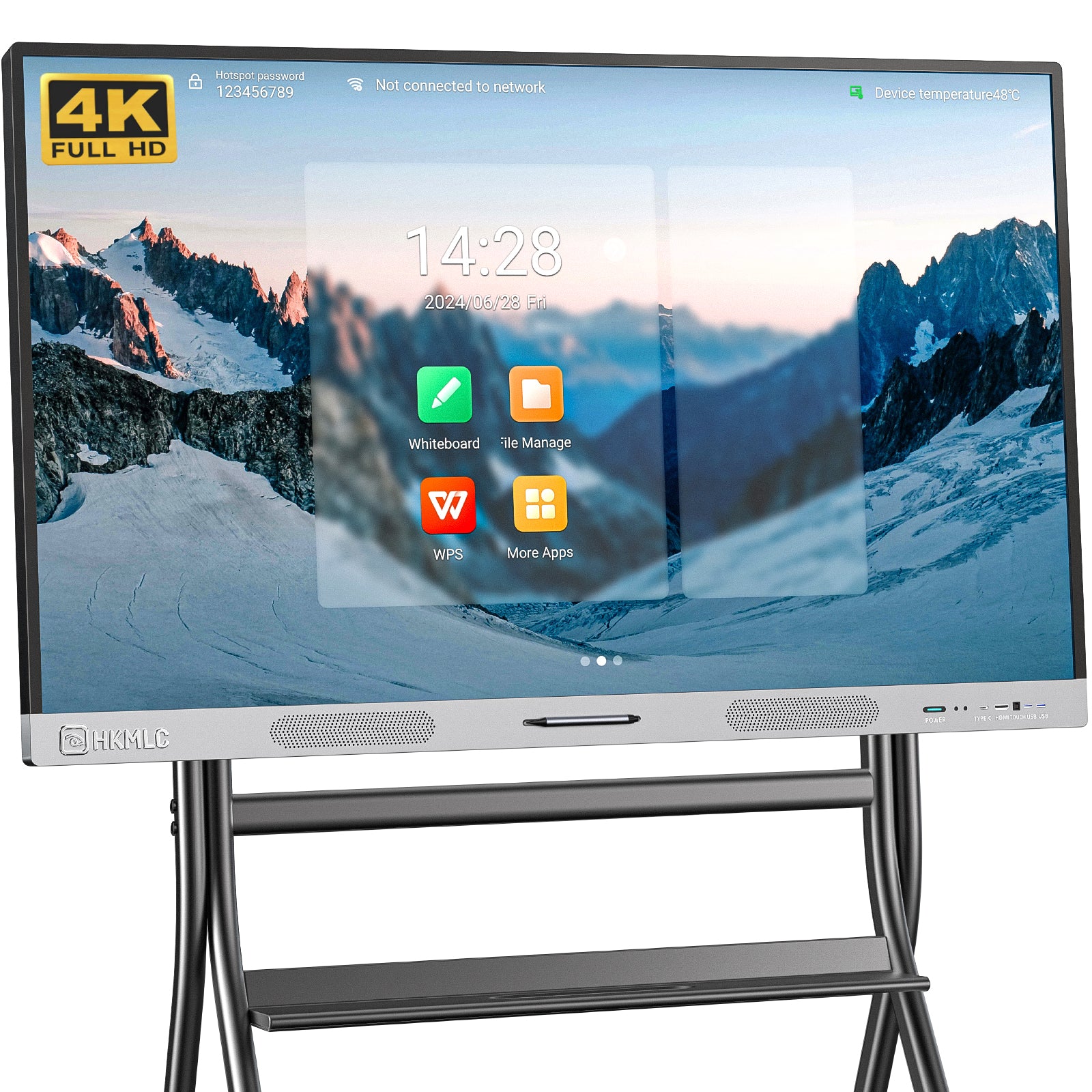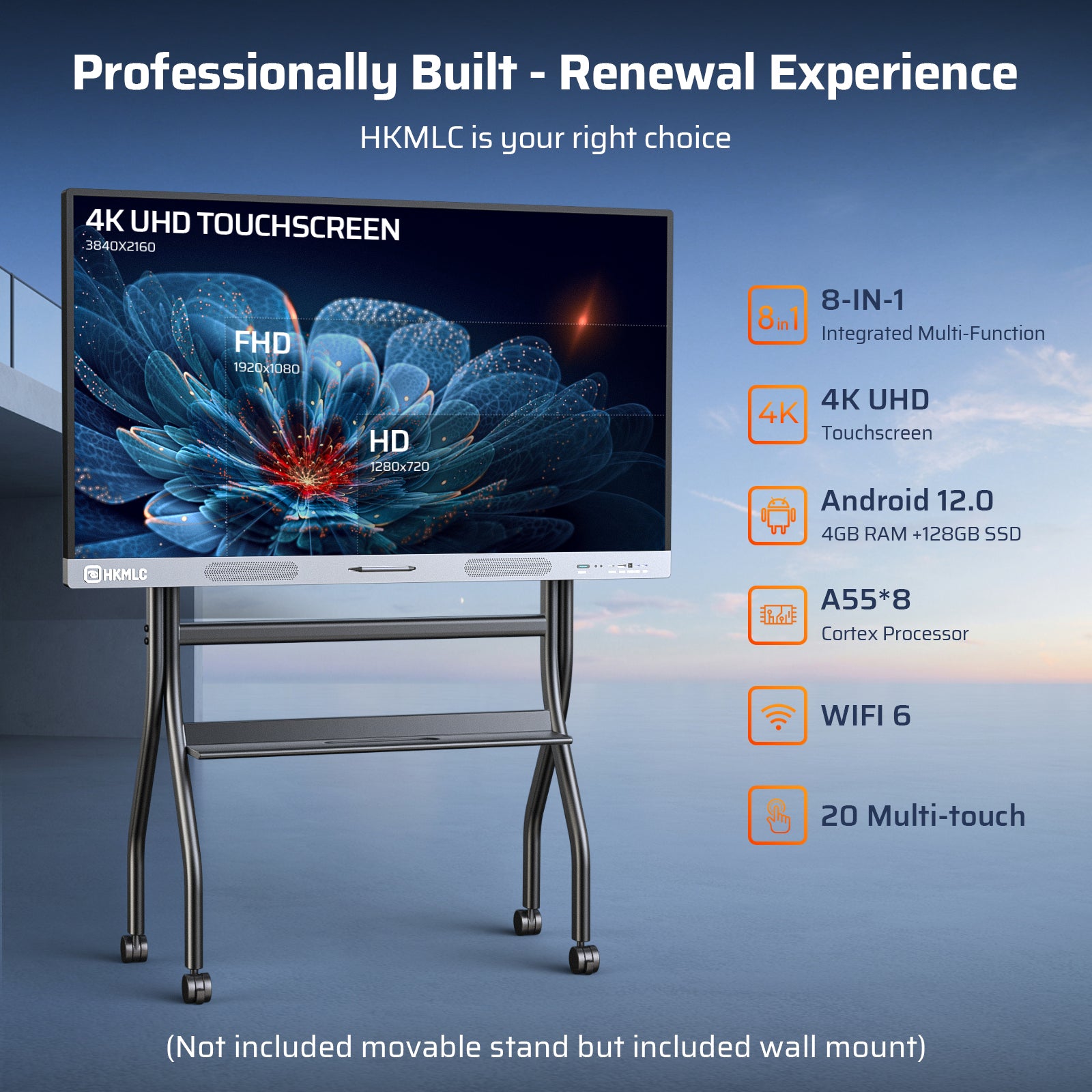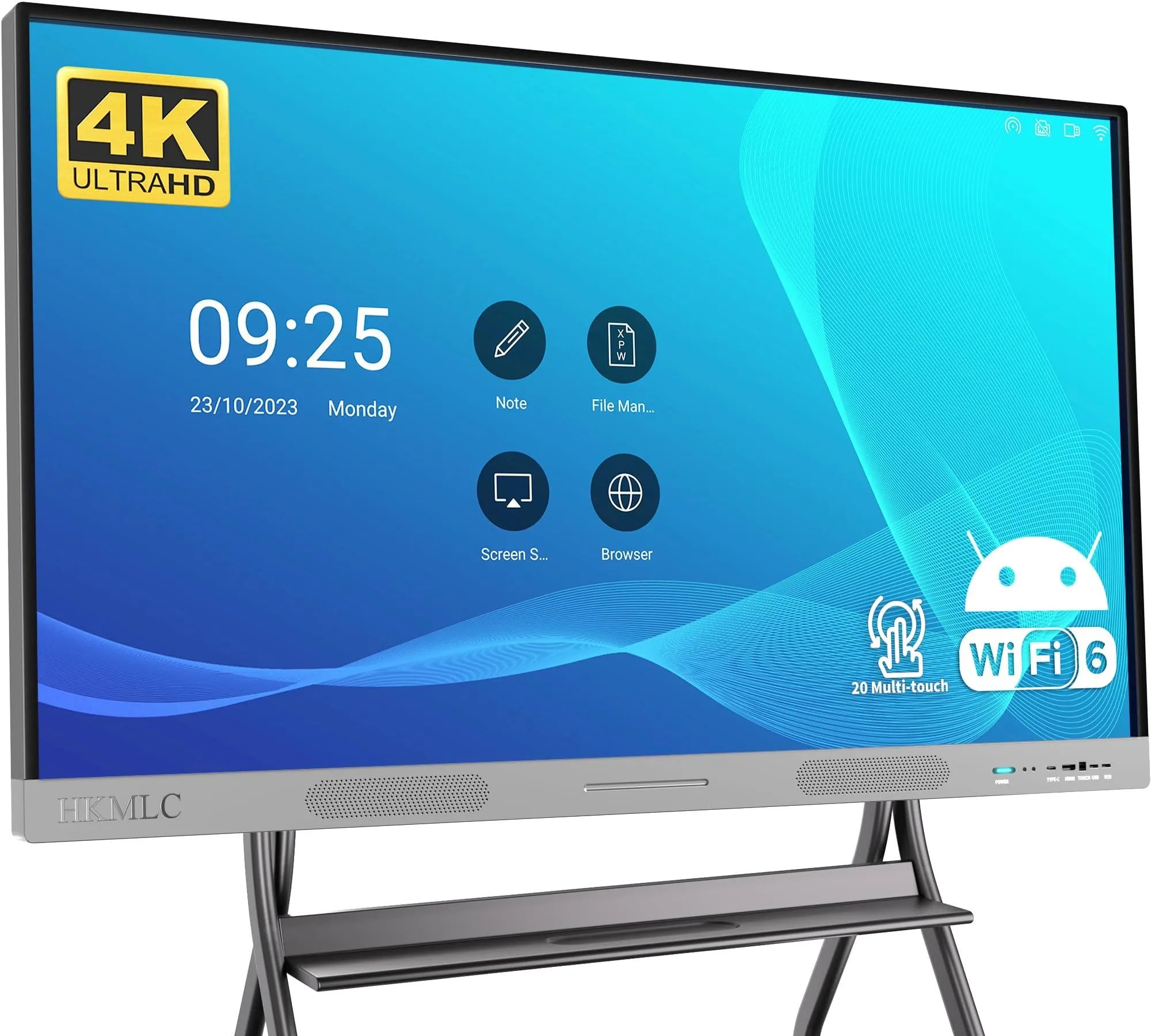When technology integrated both educational and business environments seamlessly, it has been quite a difficult choice to make between the use of Smart TVs and smart boards. While both provide interactive and dynamic ways to present content to an audience, engage them, and foster collaboration, they serve slightly different purposes and thus come with different features to cater to specific needs.
Following is a critical comparison between Smart TVs and smart boards to help one make an informed choice for needs either in the classroom, meeting room, or collaborative workspace.
What is a Smart TV?
Smart TV refers to the incorporation of the internet and interactive features into a television for purposes beyond mere television. It grants users the ability to make use of streaming services, browse the internet, install apps, and even sometimes mirror content from other devices, such as smartphones or laptops. Smart TVs have been in high demand both for homes and businesses due to their adaptability and integration of leisure with either work or studies.
What Are the Benefits of a Smart TV?
1. High-Resolution Display: One of the main advantages of a Smart TV is its stunning display quality. Many Smart TVs come in Full HD, 4K, or even 8K resolution, providing crystal-clear images and videos. This makes them perfect for streaming high-quality content or displaying detailed visuals during presentations.
- Internet Connectivity: A Smart TV connects to the internet via Wi-Fi or Ethernet, allowing users to access apps like YouTube, Netflix, or business-related apps such as Zoom and Microsoft Teams.
- Screen Mirroring: Many Smart TVs offer screen mirroring capabilities, meaning you can wirelessly share the screen of your smartphone, tablet, or computer on the TV.
- Integrated Apps: With access to various app stores, users can download and install apps directly on the Smart TV. This feature is useful for accessing learning tools, productivity apps, and entertainment content without needing external devices.
- User-Friendly Interface: Smart TVs are designed for ease of use, offering simple, intuitive interfaces that allow users to switch between apps, adjust settings, and browse content effortlessly.
What is a Smart Board?
So, what is a Smartboard? A smartboard, also very commonly referred to as a smart interactive whiteboard, is an interactive display device that combines the simplicity of a whiteboard with state-of-the-art digital technology. These boards are touch-sensitive, enabling users to interact with the on-screen display using their fingers or a stylus. Smartboards are widely in use in classrooms, boardrooms, and training sessions due to their collaboration-enabling capabilities.
How Does a Smart Board Work?
A smart board works by connecting to a computer and a projector, with the computer's desktop projected onto the board. Users can then manipulate the content on the board by touching it directly, using either their fingers or a stylus. Special software, like Smart Notebook, often comes pre-installed, allowing users to annotate, draw, and interact with on-screen content in real-time.
Key Features of Smart Boards:
- Touch Interactivity: The most significant feature of a smart boardis its ability to respond to touch. Users can write, draw, annotate, and manipulate content directly on the screen, making it a great tool for brainstorming, teaching, and presenting.
- Annotation Tools: Smart boardscome with built-in software that allows users to write over images, videos, and documents. These annotations can be saved, shared, and exported for future reference.
- Collaboration: Smart boardsallow multiple users to interact with the screen simultaneously, making them ideal for group work, problem-solving, or collaborative presentations.
- Screen Sharing: Just like a Smart TV, a smart boardallows content to be mirrored from other devices such as laptops, tablets, or smartphones. This feature enables seamless integration of various devices into one interactive presentation platform.
- Educational and Business Software: Smart boardscome pre-loaded with educational software like Smart Notebook, which allows educators to create engaging and interactive lessons. For businesses, smart boards often integrate with collaboration tools such as Zoom, Google Workspace, and Microsoft Office.
Comparison of Smart Boards and Smart TVs
Now that we have defined both Smart TVs and smart boards, let's dive into comparing some of the main features that will help you decide which best suits your needs.
-
Interactivity
Smart TV: Even though Smart TVs boast a number of interactive functions, such as the use of apps and screen mirroring, through remote control or other device input methods, their interactivity is rather limited. This is because they lack the touch functionality that would enable users to interact directly with whatever appears on their screens.
Smartboard: Smartboardsexcel in their interactive capabilities. They have multi-touch capabilities, meaning that multiple individuals can simultaneously write, draw, or manipulate items on the screen. This makes smartboards far superior to smart TVs for interactive presentations and collaboration sessions.
2. Quality Display
Smart Television: Usually, smart TVs possess superior display qualities, sometimes giving resolutions to as high as 4K or even 8K. Thus, they are very appropriate for displaying detailed visuals, streaming high-definition videos, or showing detailed designs.
Smartboard: Smartboardsalso offer good-quality displays, though it would be rare for them to arrive at the clarity of the high-end Smart TVs. In any case, this weakness in display quality is generally never a significant drawback as smart boards focus more on interactivity rather than on purely visual content.
3. Price
Smart TV: Smart TVs are relatively cheaper or extremely expensive depending on brands, size, and added features. Base models may be fairly cheap, but high-end models that boast 4K or 8K resolution are very expensive.
Smartboard: Generally, smartboards have much higher prices than smart TVs because of their interactive functions and special software used on them. However, the best smartboards in the market boast high-quality performance and multiple features, hence giving value for money to educational and business establishments.
Which One is the Better Choice?
Which brings us to the conclusion that, ultimately, it all comes down to the scope of your needs. A smart board would be more suitable for interactive learning, collaboration, and dynamic presentations, while a Smart TV is best for entertainment and simple presentations. Knowing the device's limitations and capabilities helps in making the best choice for the classroom, boardroom, and even the living room.
If you're looking for a device that can enhance interactivity in your classroom or meeting room, the HKMLC Smartboard is your best choice. Compared to a smart TV, the HKMLC Smartboard offers superior interactivity, multi-touch functionality, and excellent display quality, making it perfect for both educational and business environments. With its integration of advanced software and high-definition screen, the HKMLC Smartboard helps you achieve seamless team collaboration, dynamic presentations, and an enhanced learning experience. Choose the HKMLC Smartboard today to bring a modern solution to your classroom or workspace!















